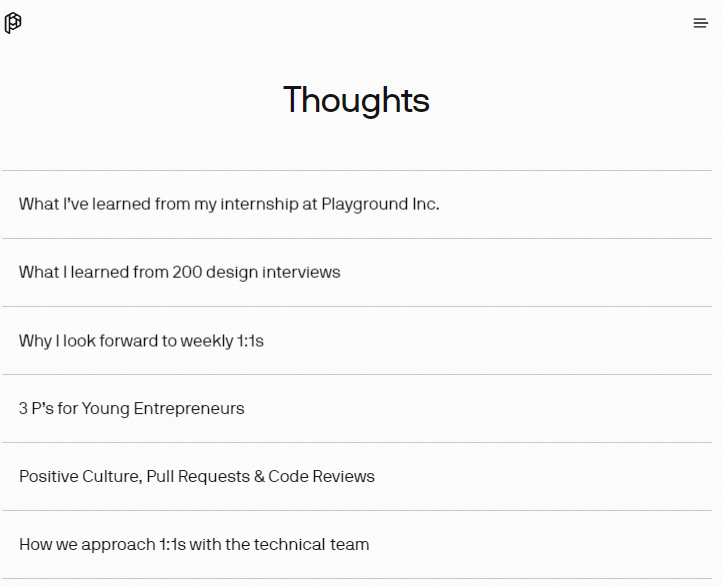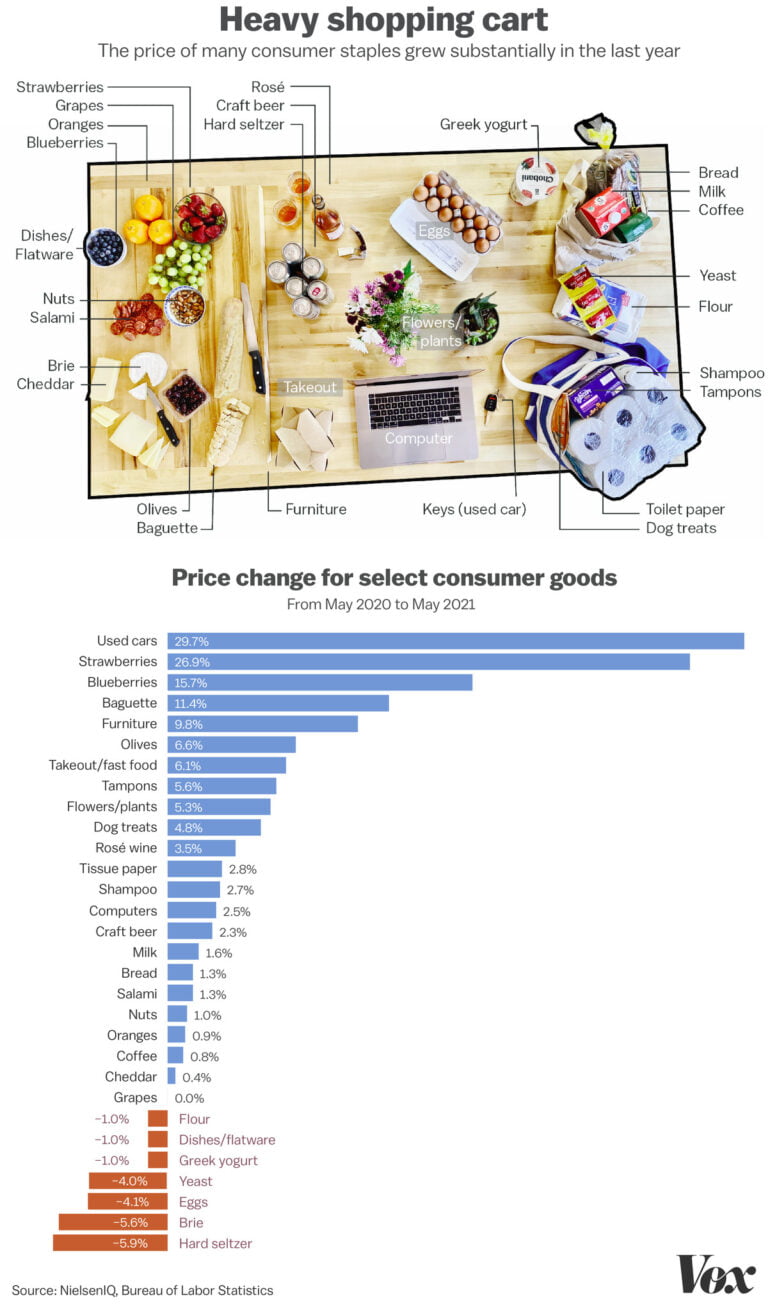The old ways of marketing — aggressive selling, in-your-face promotion — are no longer effective. Potential clients get turned off when an account executive comes to them with unsolicited proposals and would rather look for creative services on their own terms.
This means inbound marketing is more important than ever as a promotional tool for your creative business. Just building a website and posting a design portfolio is not enough. To truly stand out, your design agency needs to be both resourceful and true to its own brand. Here are some tips that could help you craft an inbound marketing campaign that results in new business.
1. Let your brand values and mission guide you
Table of Contents
- 1 1. Let your brand values and mission guide you
- 2 2. Show your prospective customers your value
- 3 3. Give your customers a personalized pitch
- 4 4. Begin with the target end result
- 5 5. Always tell a true story
- 6 6. Use social proof whenever possible
- 7 7. Prioritize customer needs in your inbound campaign
- 8 8. Create evergreen content
- 9 9. Leverage marketing automation tools
- 10 10. Be strategic with your marketing funnel
- 11 11. Collaborate with influencers
- 12 12. Nurture healthy relationships with your top customers
- 13 13. Follow Google’s creative ABCD guidelines
- 14 14. Allow your strategies to evolve along with your customers
- 15 Wrapping up
Most business development people focus so much on closing the deal that they fail to focus on what actually matters — their agency’s brand values and mission.


Wieden + Kennedy, for example, distills its brand values into strong, powerful statements: “influence culture, build business value, strong and provocative relationships”. They have never compromised their values, which is why their clients, which include Nike, keep turning to them for their creative needs.
While getting that signature on the dotted line keeps your agency running, losing sight of the brand values might turn prospective customers away, especially if the quality of your work suffers as a result of surrendering creative control to overly demanding clients. As much as possible, you want your clients to buy into your vision and convince their friends that your vision and theirs could align as well.
2. Show your prospective customers your value
With inbound marketing campaigns, hard selling very rarely works, and with good reason — most leads who visit your site are merely looking around and searching for something that inspires them.
This means that your marketing content should focus on customer engagement. You need to demonstrate the value you have provided to your clients. It could be in the form of a viral ad that gained a client a few more thousand followers on Facebook, or an expertly-managed product placement campaign that resulted in a higher profile for your client.
As long as your client sells something that is of value in this world, you don’t have to make an overly elaborate marketing pitch. All you need to do is persuade your prospects that you have a track record of delivering results, and that you can do the same for them.
3. Give your customers a personalized pitch
Speaking of pitches, you cannot use the same pitch for different clients. When someone fills out the “Contact Us” form, you need to check the sender’s company and industry to determine the type of content you will send them.
For example, running a campaign for a non-profit organization is radically different from running a campaign for a digital transformation tech startup. The goals are different, the methods are different, and even the target audiences are different. Responding to an inquiry with a pitch intended for another type of client will confuse your prospect and convince them that you’re not taking them, or their business, seriously.
When in doubt, avoid retargeting your pitches, stick to the facts, and let your customers decide for themselves.
4. Begin with the target end result
The book Seven Habits of Highly Effective People tells its readers, “Begin with the end in mind”. This is applicable not just to people seeking to improve themselves, but also to design agencies.
Your clients are more likely to care more about their intended results first, then think of how to get there second. They are coming to you with a target — a projected number of Facebook likes, expected revenues, name recall — and if you don’t get this target right, you put yourself out of contention for their business.
On the other hand, understanding a prospect’s desired results will help you craft a campaign that considers their pain points and maps out a way to relieve them, resulting in customer satisfaction and business referrals.
5. Always tell a true story
Customers nowadays are no longer as easy to convince as they used to be. Because of so much fake news flying around, they tend to take everything with a grain of salt — especially stories that contain claims that seem too good to be true. In other words, they can smell a lie from a mile away.
To address this, always tell something true. As much as possible, try to back up your claims with actual numbers. But it shouldn’t stop at numbers — you have to put your customers in the middle of the action. After all, you’re telling a true story, and without a story to act as a lens, your prospects won’t be able to see the truths you are trying to convey.
One way of reinforcing your stories is presenting social proof. Potential customers want to see how others view your business, and positive customer feedback, through testimonials and reviews on pages such as Google My Business or the Better Business Bureau, will contribute to the way these prospects approach your design agency.


If you’re confident about the way you run your business, you shouldn’t just welcome reviews and testimonials — you should actually encourage your customers to write something on your behalf. A satisfied client will be more than happy to give in to your request for a glowing review or permission to use their logo on your site, so don’t be shy about it.
7. Prioritize customer needs in your inbound campaign
Inbound campaigns used to be pretty much generic, presenting the same content to everyone who visits a site, regardless of role or industry. Nowadays, inbound marketers have numerous tools at their disposal to help them customize the content that prospects encounter when they visit a page.
For example, the landing page can ask a series of questions the moment a prospect, including their concerns, targets, and needs as well as their niche, then use the data to come up with helpful content suggestions. This means that your site talks with customers about their interests, instead of just throwing unrelated content in their faces. This, in turn, leads to higher conversion rates.
You can also use tools like live chat to engage with visitors to your site. This is an effective method for moving visitors down your sales funnel.
8. Create evergreen content
Digital marketing plays a key role in customer acquisition. While writing about trending topics will help your brand get to the first page of Google searches, creating evergreen content will help your brand stay close to the top. It stays relevant regardless of the season, and when updated regularly as new information becomes available, it becomes a living document that your customers can refer to whenever they need to make a decision. In addition to evergreen content, you can also use an online quiz maker to create interactive content.


Playground Inc., for example, doesn’t just post blogs about the latest design trends. They also address non-technical topics such as people management, recruitment, business development, and effective task management. They recognize that building and maintaining a good team of people is an integral part of running a design business.
This helps establish your brand as an authority in your field, whatever type of design or marketing services you run. This sort of name recall will help ensure that clients in need of design services will look you up and contact you first before they try other agencies, if only for the “wow” factor that partnering with your agency brings to the table.
9. Leverage marketing automation tools
While you might think marketing automation applies mostly to outbound marketing, like email or social media, it can also be used in the context of inbound marketing.
The moment a prospect encounters your landing page, you can already apply marketing automation to their experience. Depending on where they’re coming from, the step of the funnel they are in, or the keywords they use to find your business, your marketing automation tool can serve up different types of content.
In addition, the system should be able to start a drip email campaign almost immediately after your lead submits their email address through an optin form. The CRM will add them to the workflow, send your lead a welcome email, then trigger an email sequence depending on their actions.
“A good sales prospecting CRM will help you better manage your leads and help improve customer acquisition by enabling you to track engagements across multiple marketing channels. Such software can help an SMB significantly improve conversions by ensuring you never lose track of important leads.”
Grégoire, noCRM.io, lead management software
Nurturing your leads through marketing automation is something you don’t just do for the sake of automation. It’s a long-term strategy that will steadily build brand awareness without going for the sale too early.
10. Be strategic with your marketing funnel
Creating your marketing funnel — a visual representation of the customer life cycle — allows you to keep track of clients, identify the reasons they stop responding to your campaign, and target the customers who are most likely to sign a contract for your services.
Most funnels have four parts: awareness, consideration, desire, and conversion. Each one has different types of applicable marketing content. Using a funnel tool will help you visualize the impact of your email and inbound marketing campaign on their likelihood of finalizing a deal with your agency.
There are different specialized tools you could use to create these visualizations. While ClickFunnels is one of the most comprehensive funnel design tools in the market today, its cost might not be in your budget. There are clickfunnels alternatives that have most of the software’s capabilities but won’t break the bank.
11. Collaborate with influencers
While the value of influencers has been under debate since the start of the pandemic, it mostly depends on the niche they operate in. Travel influencers, for example, have been confined mostly to their homes, while food influencers are taking advantage of the lockdown to share their own recipes.
Design influencers have been mostly unaffected, especially since the demand for digital property design has not changed much. They are also a lot more open to collaborations, thanks to the extra time they have on their hands. These collaborations could help get the word out about your design agency and amplify your message through a trustworthy, familiar voice.
12. Nurture healthy relationships with your top customers
Your best customers are also your top endorsers, which is why you should maintain good relationships with them. Aside from providing social proof for your landing page and social accounts, they also act as ambassadors for your agency, referring your business to friends and colleagues who are looking for design services.
One way to nurture these relationships with your best customers is to give them access to exclusive offers, which could take the form of exclusive content, free webinars, or design inspiration. You can also reward these customers for bringing new customers to your business by giving them discounts on future services.
13. Follow Google’s creative ABCD guidelines
Google has a set of guidelines for online content called ABCD (Attract, Brand, Connect, Direct) that also serves as a list of best practices for content creators. While the text of the ABCDs is directed primarily at YouTube users, they are also applicable to all other creatives, including web developers, copywriters, and content marketers.
Here are some of Google’s tips for high-converting content:
- Attract: Open with impact, feature familiar faces, use audio, and make the audience laugh.
- Brand: Focus on building a relationship with the customer first, show your brand in natural usage, and reinforce with audio.
- Connect: Watch the length of the video (or copy), create connections through humor or suspense, address the viewer directly, and keep on testing and analyzing.
- Direct: Use a call-to-action and use content and website elements to allow users to act on your CTA.
Following these guidelines for great creative content will help raise awareness of your agency and convince your potential clients that you are doing things the right way, not taking any shortcuts.
14. Allow your strategies to evolve along with your customers
Finally, your strategies should not be set in stone. Customers tend to be fickle-minded, at least with the way they want marketing content served to them, so you need to reach out to them where they tend to “hang out”.
For example, a standalone website is a good illustration of your capabilities as a design agency, but without a social media presence, your agency might as well be nonexistent. Pushing an ad through social media will educate your audience and lead viewers to a landing page, where you can ask them to subscribe to your mailing list.
Alternatively, you can send your email list subscribers a link to your social media pages, encourage them to participate in contests and other activities, and to refer their friends and colleagues to your agency. You can also create interactive content such as fun quizzes. This will help you collect a lot of data you can use when creating your content.
Wrapping up
Marketing has evolved a lot through the years. The role of inbound marketing, once neglected as a marketing tool, has become more pronounced, especially in creative fields. While it is easy to fall into the trap of shameless self-promotion, the best design agencies know that addressing client concerns will bring in more business.
We hope that the tips we listed above help you craft an inbound marketing campaign that listens to customers and gives them relevant, workable solutions. The best of luck to your agency!






